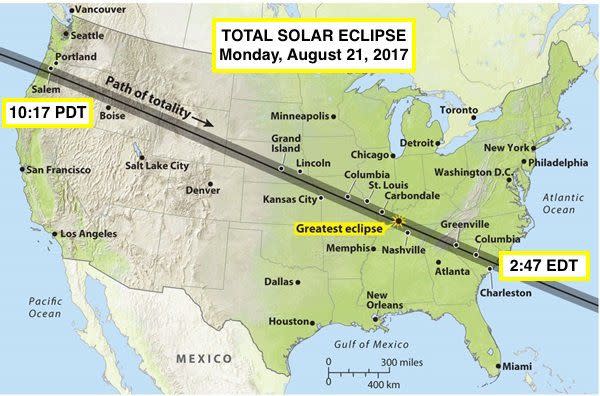Have you ever planned a trip and found yourself staring at a map with distances listed in kilometers, while your trusty odometer only displays miles? You’re not alone! This discrepancy can be a common point of confusion, especially for travelers crossing borders or venturing into unfamiliar territories. Navigating between kilometers and miles can feel like navigating a labyrinth, but fear not! This guide will equip you with everything you need to confidently convert between these two distance units.

Image: es-us.vida-estilo.yahoo.com
Just last week, I was planning a road trip across Europe. My meticulously crafted itinerary was based on kilometer distances, but the car rental company warned me that my vehicle’s speedometer displayed miles! I was suddenly faced with a dilemma — what if I missed my turn because I couldn’t gauge the distance accurately? That’s when I realized the importance of understanding these conversions, not just for travel but for various everyday scenarios.
Understanding Kilometers and Miles
Kilometers (km) and miles (mi) are both units of distance that have been used for centuries, each stemming from different systems of measurement. Kilometers form the foundational unit of distance within the metric system, a system adopted by most countries around the world. On the other hand, miles are the standard unit of distance in the United States and a few other countries that still utilize the imperial system.
While both kilometers and miles are employed to measure distance, they differ in length. One kilometer is precisely equal to 0.621371 miles. This means that a kilometer is shorter than a mile. For example, if you travel 10 kilometers, you’ve actually covered just about 6.21 miles.
Converting Kilometers to Miles: A Step-by-Step Guide
Whether you’re planning a cross-country adventure or simply trying to grasp the distance between two locations, the ability to convert kilometers to miles is a valuable skill. Here’s a breakdown of the conversion process to ensure you always have a clear grasp of distances:
Method 1: Using a Calculator
The most straightforward way to convert kilometers to miles is by using a calculator. Simply multiply the distance in kilometers by the conversion factor 0.621371. For instance, if you want to convert 3,000 kilometers to miles, you would perform the following calculation:
3,000 km * 0.621371 mi/km = 1,864.11 mi
This calculation reveals that 3,000 kilometers is roughly equivalent to 1,864 miles.

Image: www.timeout.com
Method 2: Using a Conversion Website or Mobile App
Various online websites and mobile apps dedicated to unit conversions are available, providing a convenient solution for those seeking quick conversions. These tools are user-friendly and often offer a range of conversion options. Simply input the distance in kilometers, and the app will instantly display the equivalent distance in miles.
Method 3: Estimating Conversions
While not as precise as the previously mentioned methods, you can estimate conversions mentally. A helpful rule of thumb is to remember that 1 kilometer is roughly equal to 0.6 miles. So, when converting kilometers to miles, you can simply multiply the kilometer distance by 0.6 to obtain an approximation. For example, to estimate the conversion of 3,000 km to miles, you can multiply 3,000 by 0.6, which gives you 1,800 miles.
Tips and Expert Advice for Accurate Conversions
While the process of converting kilometers to miles might appear straightforward, a few additional tips can enhance accuracy and ensure your conversions are reliable:
Always utilize a precise conversion factor: The most reliable conversion factor for kilometers to miles is 0.621371. While using the 0.6 approximation provides a quick estimate, it can lead to a slight discrepancy, especially for longer distances.
Utilize reputable conversion tools: Online conversion websites and mobile apps are readily available, but prioritize those recognized for their accuracy and reliability. Look for platforms that have established reputations and consistently produce precise conversions.
Double-check your results: Always verify your converted distance after using a calculation or conversion tool. A simple calculation with a calculator can help validate the accuracy of your conversion. Moreover, you can reference conversion charts or tables for further reassurance.
FAQs:
What is the difference between kilometers and miles?
Kilometers and miles are both units of distance. Kilometers are part of the metric system, while miles belong to the imperial system. A kilometer is shorter than a mile, with 1 kilometer equal to 0.621371 miles.
How many miles are in 1,000 kilometers?
There are approximately 621.37 miles in 1,000 kilometers. This is because 1 kilometer equals 0.621371 miles.
Is it more accurate to use kilometers or miles?
Both kilometers and miles provide accurate measurements of distance. The choice between the two largely depends on the specific country or region you are in.
How can I calculate kilometers to miles without a calculator?
While a calculator is the most accurate method, you can estimate kilometers to miles mentally. Remember that 1 kilometer is approximately equal to 0.6 miles.
3 000 Km To Miles
Conclusion
Converting kilometers to miles might seem daunting at first, but with the right methods and a little practice, it becomes a breeze. Remember to leverage the resources available to you, whether it’s a calculator, online tool, or even mental estimation. By mastering this fundamental conversion, you’ll not only be able to navigate trips across borders with confidence but also gain a deeper understanding of the world around you.
Are you interested in learning more about other units of measurement? Let us know in the comments below.





